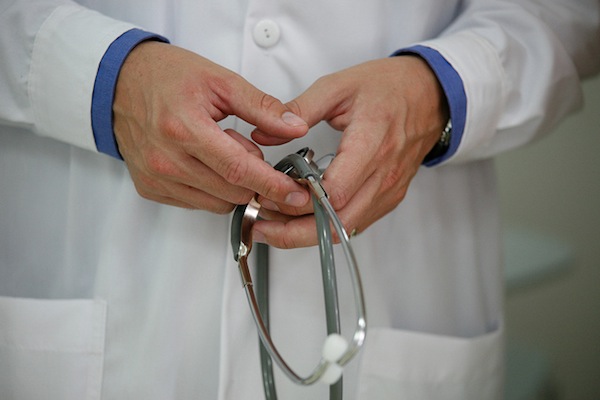
Low-income Californians want closer relationships with their doctors’ offices — but not only with their doctor, according to a new poll that plumbed the needs and desires of a population that will be at the heart of federal health reform.
The survey, released Monday, found that most low-income patients would be happy to have a “team approach” to treatment that included not just a doctor but nurses, medical assistants, dieticians and health outreach workers.
The key finding is that these patients now often feel disconnected from their medical provider, and they want a personal relationship with someone who knows their name, what ailments they have and what treatments have been tried in the past.
The survey of a representative, random sample of 1,024 low-income Californians aged 19 to 64 also found that a surprising number of people would like to use new technology to communicate with their health care provider, but relatively few do so today.
The poll was managed and analyzed by Langer Research Associates of New York and funded by the Blue Shield Foundation of California. (Note: The Foundation is also a financial sponsor of calhealthreport.org.)
Gary Langer, president of Langer Research, said the broad survey of low-income Californians, believed to be the largest of its kind ever done, is especially relevant as the federal Affordable Care Act takes full effect over the next 18 months. The population polled – those whose incomes are below 200 percent of the federal poverty rate – will gain new access to health coverage and more choices for how they get their health care.
But as millions of Californians who are now without insurance get coverage, experts fear that there will not be enough doctors to go around. In some communities, low-income people in the state Medi-Cal program already have difficulty finding doctors who will accept the government-subsidized health plan.
“There is a stated desire for a regular personal doctor, which can be a challenge for many providers,” Langer said. “What we found in the study is that that really is an expression of a desire for a personal connection, a desire to have someone who knows you on a personal level and to have someone you can see on a regular basis.
“Both of these speak to a level of connectedness.”
The answer, some believe, is to offer patients a team-based approach headed by a physician but including other medical professionals who are less costly and, because their jobs require less training, can be added more quickly to the health care workforce. This model meshes well with the idea of a “medical home” – a health care provider where a team of professionals keep track of a patient’s history, the medications they are taking, and the progress they are making.
The survey found that 81 percent of low-income people who don’t have team-based care today say they would be willing to try it. And an astounding 94 percent of people who do have it now say they are satisfied – a level of satisfaction rarely found among any institution or service.
Similarly, just one in six low-income Californians said they now have what is known as a health care “navigator” – someone to guide them through the medical system and its bureaucracy. But 91 percent of those who do have a navigator say they are satisfied.
How important can that connection be for patients? Very.
Eighty percent say it is important to have someone at the doctor’s office who “knows you pretty well.” But only 38 percent report having someone like that now.
Because the traditional, doctor-dominated model remains the most prevalent, most people who report having that personal connection have it with a physician. Fifty percent of patients who go to a private doctor’s office report have a personal connection, but just 38 percent of patients at community clinics say they have a connection, and just 36 percent of patients who use Kaiser Permanente report having that personal link that they desire.
“People are open to new models of care,” said Peter Long, president and Chief Executive Officer of the Blue Shield of California Foundation. “They want a good relationship and an ongoing connection. And when they have these things they are willing to take more responsibility for their own care.”
Long also noted that low-income patients, especially young ones, are eager to embrace new technology. He said concerns about privacy have so far prevented widespread use of e-mail and texting to communicate with patients, but patients seem to want to use those tools, and electronic communication could vastly improve the productivity of the medical profession.
Six in ten low-income Californians, for example, said they would be willing to substitute a phone conversation for a personal visit on routine matters. And around 60 percent of those surveyed also said they would be willing to use e-mail and the Internet to schedule appointments, review their medical records and renew prescriptions. Only 5 percent are doing so now.
“There is a gap between what people want and what they are getting,” Long said.
The survey was conducted in English and Spanish from March 12 to April 18. Results for the full sample have a margin of error of plus or minus 3.5 percentage points.





